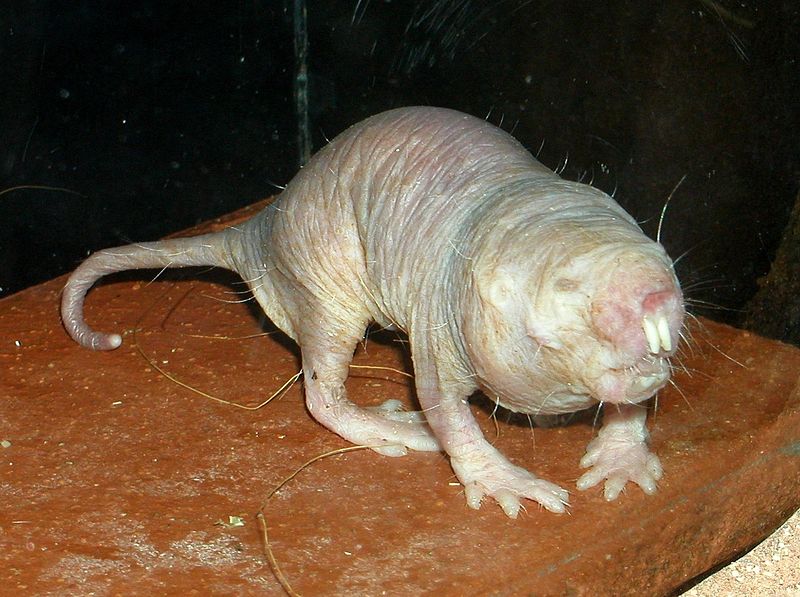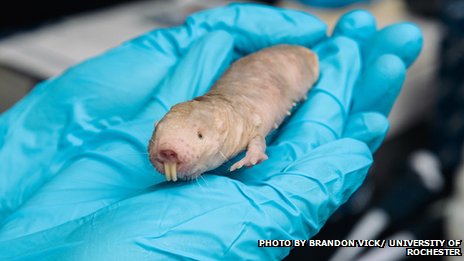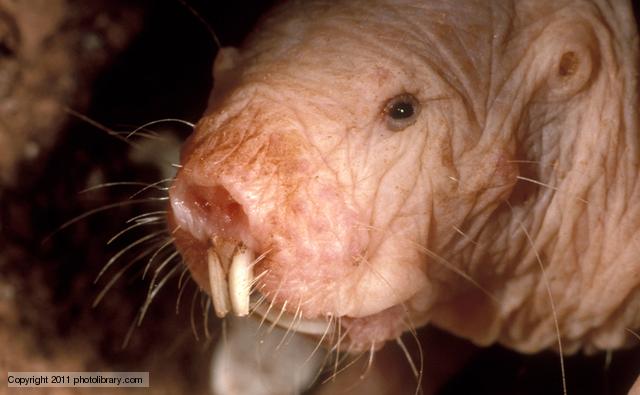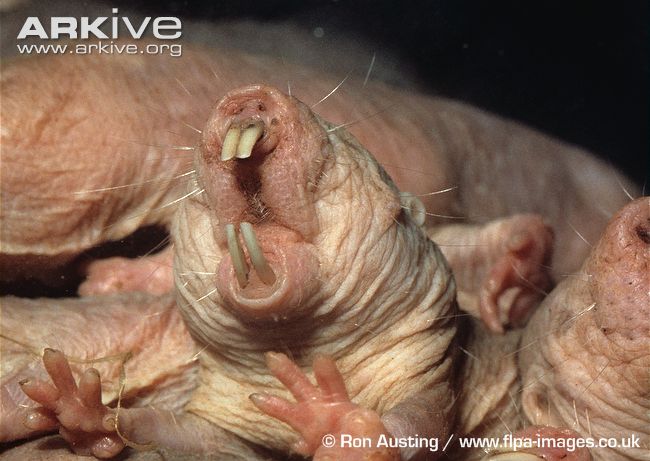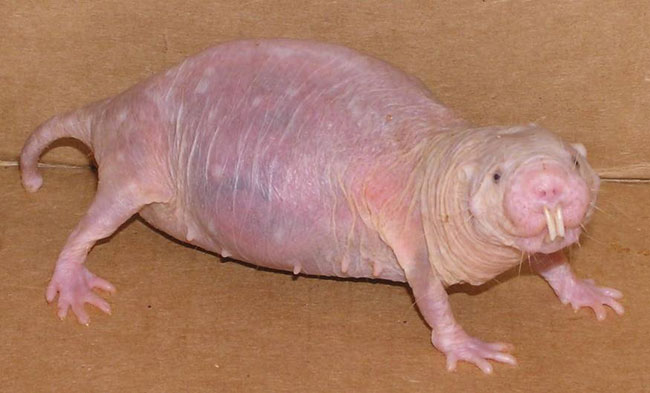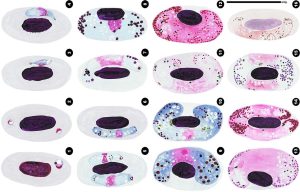Naked Mole-Rat May Help Fight Cancer
As you can see from the picture above, the East African naked mole-rat will be winning no prizes for being cute. But then neither will I, so I can’t judge. A team led by researchers from the University of Rochester, New York have been studying the naked little fellas because they don’t get cancer. They’re the only animal that has so far been studied that doesn’t suffer from this most common affliction. There have been rumors that sharks don’t get cancer, but they actually do, it’s just one of those “facts” we all repeat because we heard it once and liked the sound of it.
Naked mole-rats however are the real deal. They have a high level of a sugary substance in their skin which prevents tumour growth. This substance, hyaluronan (HMW-HA), is involved in tissue repair. HMW-HA is already used to treat arthritic pain and as a cosmetic filler to hide wrinkles, if it’s removed from the mole-rat they become susceptible to cancer.
The scientists think that hyaluronan probably evolved in excess in the naked mole-rat’s skin to give it it’s elasticity which helps the mole-rat as it pushes it’s way through holes in the dirt, and the anti-cancer aspect is just a serendipitous add on.
These studies are a long way away from actually helping patients, but any step forwards is a welcome one. The fact that the chemical is already being used in humans without adverse effect is a big plus point too.
The naked mole-rat, or sabre-toothed sausage as my mate Attenborough once referred to them as, are a bit of an anomalous animal; they have societal structures more like insects, and are described as eusocial. They have a queen that’s twice as big as the rest of the colony dwellers and is almost constantly pregnant with 20+ little one’s writhing about in her. They also can’t regulate their body temperature as most mammals do, so they’re more like a reptile in that regard.
Naked mole-rates lack substance P which is responsible in other mammals for transferring pain signals. This means that they don’t feel pain if you pour acid on them (what a lovely experiment), they reckon that adaptation might have developed to help them ignore an increase in acid in their bodies due to breathing high levels of CO2 in their underground homes.
They can live for 28 years or more – around ten times longer than other rodents of equivalent size and they’re as happy walking backwards as they are forwards. And if that’s not enough, their teeth are actually above their lips rather than under them, so that their mouths don’t fill with dirt as they dig. Weird…… and lastly….. they eat their own poo sometimes, but don’t we all….

